Here we try to bring to you the best machine learning books but what is Machine learning, it’s to learn from data repetitively and to find the pattern hidden there. By applying the results of learning to new data, in other word Machine learning allows computers to analyze past data and predict future data. Machine learning is widely used in familiar places such as product recommendation system and face detection of photos. Also, as cloud machine learning services such as Microsoft’s “Azure Machine Learning”, Amazon’s “Amazon Machine Learning”, and Google’s “Cloud Machine Learning” are released.
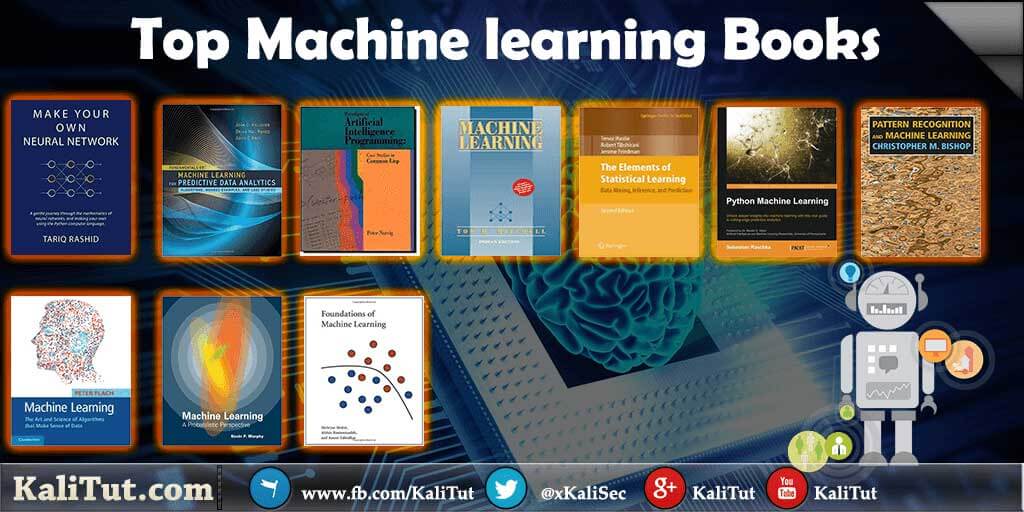
With all the variety of literature on programming and IT, there are topics where it is very difficult to find books for beginners. One of these topics is artificial intelligence, in our case, machine learning. The vast majority of books require the reader to have knowledge of Python, the theory of mathematical analysis and statistics, at least the basic ability to create algorithms for processing data arrays.
A single book won’t help you fully master machine learning, simple cause It’s complicated many topics, purposes and benefits in real-world applications.
This article is written to help novices and experts alike find the best Machine learning books to start with or continue their education. there is so many resources available and it’s really confusing where to start
so in this article, I will highlight the best machine learning books that you can start with and dive deeper into machine learning!
What is machine learning?
The simplest definition of machine learning comes from what Berkeley said: machine learning is a branch of AI that explores ways to make computers more efficient based on experience.
In order to understand this definition more deeply, we will split it and analyze it.
The branch of AI: Artificial intelligence is a type of research and development that enables computers and their systems to successfully complete tasks that normally require human intelligent behavior. Machine learning is a technology and process that trains computers to complete the above tasks, and is an essential part of it.
Exploration method: At this stage, machine learning technology is still emerging . Although some models for training computers have been identified and used, different models are needed for different business problems. Different models can also be used when training computers. , More models will be developed over time.
Help the computer to improve its performance: In most cases, to make the computer complete the task of artificial intelligence, it needs the help of humans to practice and adapt.
Based on experience: Another way to provide experienced AI-to provide data for it. As more data is entered into the system, the computer can respond more accurately to it and the future data it will encounter.
How machine learning works?
Let’s see how machine learning works:
Gathering: Machine learning depends on data. The first step is to ensure that you have the right data according to the requirements of the problem you want to solve.
Cleanup: Data can be generated from different sources, contained in different file formats, and expressed in different languages. It may be necessary to add or delete information in the dataset, because some instances may lack information, while others may contain unwanted or unrelated entries. Its preparation will affect its availability and the reliability of the results.
Split: Depending on the size of the data set, only a part may be needed. From the selected samples, the data should be divided into two groups: one for training algorithms and the other for evaluation algorithms.
Training: This stage is mainly to find a function that accurately completes the selected goal. According to the type of model used, different training forms are used: for example, fitting a line in a simple linear regression model to generate a decision tree for the random forest algorithm. In order to better understand the neural network, the general algorithm will try to process the data when it encounters a part of the data set. Measures its own performance and automatically adjusts its parameters (also referred to as back propagation ), it can continue to produce the desired results until having sufficient reliability. Until it can continue to produce the desired results, and has sufficient reliability.
Evaluation: Once the algorithm performs well on the training data, it will again use unseen data for measurement. This process allows you to prevent overfitting , but this only happens when the learning algorithm is running well and is related to your training data.
Optimization: The model is optimized for integration within the target application to ensure its efficiency.
What is machine learning used for?
Enterprises need to consider the three stages of machine learning development and their applications. These three stages refer to: descriptive stage, predictive stage and normative stage.
The descriptive stage refers to recording and analyzing historical data to enhance business intelligence. Provide descriptive information to managers and better understand the results and consequences of past actions and decisions. This process has now become the routine work of most large companies worldwide.
The second stage of applied machine learning is prediction. Collecting data and using it to predict specific outcomes can increase responsiveness and make it make decisions more efficiently.
The last normative stage is the most advanced machine learning stage. This stage has been applied incorporate activities and is constantly moving forward under the impetus of emerging companies. Understanding the causes, motivations, and background when targeting effective and efficient business practices is a prerequisite for optimal decision making, and it is not enough to predict behavior or results. Specifically, this stage is possible when people and machines are combined. Machine learning is used to find meaningful relationships and predict results, while data experts act as translators to understand why the relationship exists. In this way, decisions can be made more accurately.
best Machine learning Books
Machine Learning
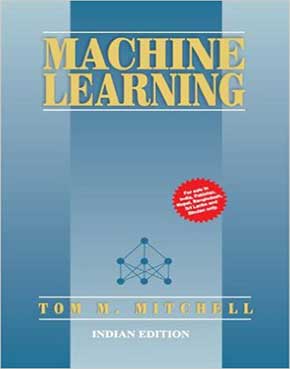
For those who are just starting, chapters one through five are useful: they describe the processes of preparing and researching data, modeling and evaluating models. Further practice. Plus advanced topics: feature design and optimization.
Machine Learning book addresses many important questions about machine learning. This is not a task book, but a book that will perfectly prepare the reader for mastering Machine Learning.
Good content explained in very simple language.
The book covers the concepts and techniques from the various fields in a unified fashion
and very recent subjects such as genetic algorithms, re-enforcement learning and inductive logic programming.
Writing style is clear, explanatory and precise.
python machine learning
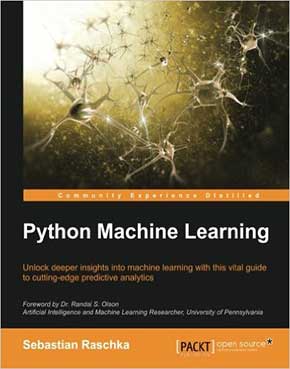
Python machine learning is one of the best machine learning books you can find, If you want to find out how to use Python to start answering critical questions of your data, pick up Python Machine Learning – whether you want to get started from scratch or want to extend your data science knowledge, this is an essential and unmissable resource.
This is a great book to get you up and running with machine learning. It manages to not only cover the basics but also talks about some of the more advanced topics.
If you want to get a good understanding of machine learning then this is the book for you.
There are a couple of things that I really liked about this book.
- You learn a lot of things that you can’t find online and that are APPLICABLE to the real world. Even if you just want to get into machine learning and use it but don’t necessarily want to become a data scientist this is a great book.
- Although this book is focusing on python the math that you need to implement the algorithms are all there. What’s great about that is that I was able to “Translate” most of the examples from the book to C++ code without much hustle. Not only that but the math behind these algorithms made a lot more sense after reading this book. So even if you don’t necessarily want to use python but want to gain intuition over how these algorithms work this book will also come in handy.
- This book isn’t just about Machine Learning algorithms. It actually talks quite a bit about preparing and getting good data in general. Which is crucial for every data scientist since almost 80% of your job is getting good data. And another 20% finding a good model and training it.
What You Will Learn
- Explore how to use different machine learning models to ask different questions of your data
- Learn how to build neural networks using Pylearn 2 and Theano
- Find out how to write clean and elegant Python code that will optimize the strength of your algorithms
- Discover how to embed your machine learning model in a web application for increased accessibility
- Predict continuous target outcomes using regression analysis
- Uncover hidden patterns and structures in data with clustering
- Organize data using effective pre-processing techniques
- Get to grips with sentiment analysis to delve deeper into textual and social media data
The Elements of Statistical Learning
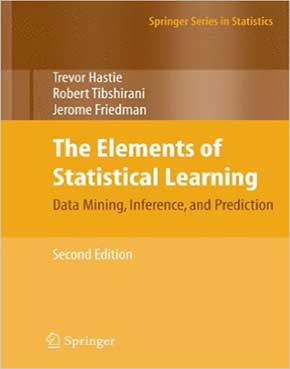
The Elements of Statistical Learning: Data Mining, Inference, and Prediction, Second Edition (Springer Series in Statistics)
During the past decade, there has been an explosion in computation and information technology. With it have come vast amounts of data in a variety of fields such as medicine, biology, finance, and marketing. The challenge of understanding these data has led to the development of new tools in the field of statistics, and spawned new areas such as data mining, machine learning, and bioinformatics. Many of these tools have common underpinnings but are often expressed with different terminology. This book describes the important ideas in these areas in a common conceptual framework.
This review is written from the perspective of a programmer who has sometimes had the chance to choose, hire, and work with algorithms and the mathematician/statisticians that love them in order to get things done for startup companies. I don’t know if this review will be as helpful to professional mathematicians, statisticians, or computer scientists.
The good news is, this is pretty much the most important book you are going to read in the space. It will tie everything together for you in a way that I haven’t seen any other book attempt. The bad news is you’re going to have to work for it. If you just need to use a tool for a single task this book won’t be worth it; think of it as a way to train yourself in the fundamentals of the space, but don’t expect a recipe book. Get something in the “using R” series for that.
When it came out in 2001 my sense of machine learning was of a jumbled set of recipes that tended to work in some cases. This book showed me how the statistical concepts of bias, variance, smoothing and complexity cut across both fields of traditional statistics and inference and the machine learning algorithms made possible by cheaper cpus. Chapters 2-5 are worth the price of the book by themselves for their overview of learning, linear methods, and how those methods can be adopted for non-linear basis functions.
The hard parts:
- First, don’t bother reading this book if you aren’t willing to learn at least the basics of linear algebra first. Skim the second and third chapters to get a sense for how rusty your linear algebra is and then come back when you’re ready.
- Second, you really really want to use the SQRRR technique with this book. Having that glimpse of where you are going really helps guide you’re understanding when you dig in for real.
- Third, I wish I had known of R when I first read this; I recommend using it along with some sample data sets to follow along with the text so the concepts become skills not just abstract relationships to forget. It would probably be worth the extra time, and I wish I had known to do that then.
Pattern Recognition and Machine Learning
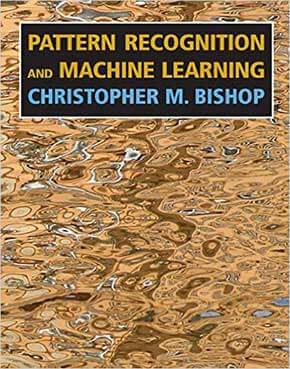
Pattern Recognition and Machine Learning (Information Science and Statistics)
This is the first textbook on pattern recognition to present the Bayesian viewpoint. The book presents approximate inference algorithms that permit fast approximate answers in situations where exact answers are not feasible. It uses graphical models to describe probability distributions when no other books apply graphical models to machine learning. No previous knowledge of pattern recognition or machine learning concepts is assumed. Familiarity with multivariate calculus and basic linear algebra is required, and some experience in the use of probabilities would be helpful though not essential as the book includes a self-contained introduction to basic probability theory.
This graduate-level book is a very good reference for classic pattern recognition and machine learning methods. It might not be the best book for a first-time learner though since the author tends to jump-step a lot. This is understandable considering the amount of content and insightful discussions covered. For advanced learners, this book is one of the best.
Machine Learning: The Art and Science of Algorithms that Make Sense of Data
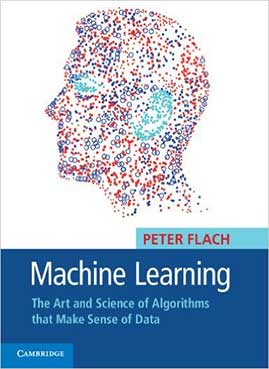
Machine Learning brings together all the state-of-the-art methods for making sense of data. With hundreds of worked examples and explanatory figures, the book explains the principles behind these methods in an intuitive yet precise manner and will appeal to novice and experienced readers alike.
As one of the most comprehensive machine learning books around, this book does justice to the field’s incredible richness, but without losing sight of the unifying principles. Peter Flach’s clear, example-based approach begins by discussing how a spam filter works, which gives an immediate introduction to machine learning in action, with a minimum of technical fuss. Flach provides case studies of increasing complexity and variety with well-chosen examples and illustrations throughout. He covers a wide range of logical, geometric and statistical models and state-of-the-art topics such as matrix factorization and ROC analysis. Particular attention is paid to the central role played by features. The use of established terminology is balanced with the introduction of new and useful concepts, and summaries of relevant background material are provided with pointers for revision if necessary. These features ensure Machine Learning will set a new standard as an introductory textbook.
user review:
In real world, three cohorts would approach Machine Learning differently –
A. Programmers – “How” – interested in quickly learning the libraries, tips/tricks to scale algorithms with larger data sets
B. Theorists – “What” – interested in choosing the right algorithm, design ensemble, selecting and extracting right features
C. Fashionists – “Show” – in this category, some of the even basic reporting/analytics are not termed “Machine Learning”, need enough buzzwords pieced together to repaint the old apps.
Flach’s book is a great source for those who are 75%-25% between the first two, and perhaps even greater especially if your Linear Algebra (basics) is not too rusty. It gives a wide and somewhat deep tour of the landscape broken into four paradigms (Quantitative/Analytical, Logical, Geometric, Probabilitisic) and does a real good job on feature design. The book is interspersed with some key insights that are not to be found elsewhere (e.g., how the ‘pseudo-inverse’ in OLS is really decorrelate-scale-normalize the distribution; Skew-Kurtosis are the statistical measure of “shape”; Naive Bayes is not only Naive but also not particularly Bayesian; How Laplacian Estimate generalizes into Pseudo-Counts and then to m-estimate etc.).
machine learning a probabilistic perspective
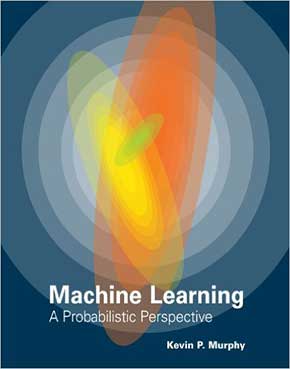
Machine Learning: A Probabilistic Perspective (Adaptive Computation and Machine Learning series)
Today’s Web-enabled deluge of electronic data calls for automated methods of data analysis. Machine learning provides these, developing methods that can automatically detect patterns in data and then use the uncovered patterns to predict future data. This textbook offers a comprehensive and self-contained introduction to the field of machine learning, based on a unified, probabilistic approach. The coverage combines breadth and depth, offering necessary background material on such topics as probability, optimization, and linear algebra as well as discussion of recent developments in the field, including conditional random fields, L1 regularization, and deep learning.
The book is written in an informal, accessible style, complete with pseudo-code for the most important algorithms. All topics are copiously illustrated with color images and worked examples drawn from such application domains as biology, text processing, computer vision, and robotics. Rather than providing a cookbook of different heuristic methods, the book stresses a principled model-based approach, often using the language of graphical models to specify models in a concise and intuitive way. Almost all the models described have been implemented in a MATLAB software package — PMTK (probabilistic modeling toolkit) — that is freely available online. The book is suitable for upper-level undergraduates with an introductory-level college math background and beginning graduate students.
An astonishing machine learning book: intuitive, full of examples, fun to read but still comprehensive, strong and deep! A great starting point for any university student — and a must have for anybody in the field.
Foundations of Machine Learning
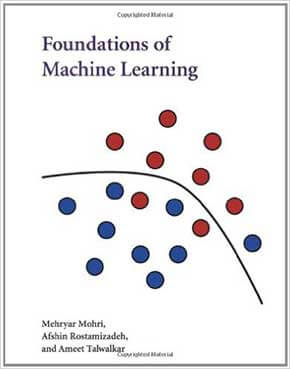
Foundations of Machine Learning (Adaptive Computation and Machine Learning series)
A solid, comprehensive, and self-contained book providing a uniform treatment of a very broad collection of machine learning algorithms and problems. Foundations of Machine Learning is an essential reference book for corporate and academic researchers, engineers, and students.
(Corinna Cortes, Head of Google Research, NY)
Finally, a book that is both broad enough to cover many algorithmic topics of machine learning and mathematically deep enough to introduce the required theory for a graduate level course. Foundations of Machine Learning is a great achievement and a significant contribution to the machine learning community.
(Yishay Mansour, School of Computer Science, Tel Aviv University)
In my opinion, the content of the book is outstanding in terms of clarity of discourse and the variety of well-selected examples and exercises. The enlightening comments provided by the author at the end of each chapter and the suggestions for further reading are also important features of the book. The concepts and methods are presented in a very clear and accessible way and the illustrative examples contribute substantially to facilitating the understanding of the overall work.
make your own neural network by tariq rashid
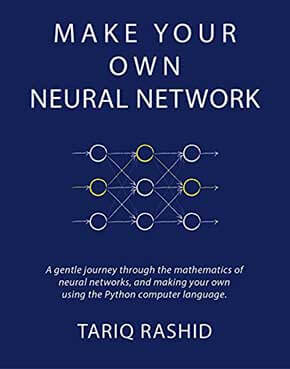
This is a very nice introduction into Neural Networks. I have been recommending this to my friends and family. Even if you are afraid of the mathematics involved, the appendix in the book covers what you need to know in order to make sense of the math (most of it is simple algebra) with just a bit of derivatives that involve the chain rule. This is one of the few books that not only goes over the theory but also the step by step implementation (training your network to recognize handwritten numbers in Python) as well as testing the code and making minor tweaks to show how that will affect the overall accuracy of the network. For an added bonus, the author includes a chapter describing how you can train the network to recognize your own handwriting and things you can do to further increase the accuracy.
A step-by-step gentle journey through the mathematics of neural networks, and making your own using the Python computer language.
Neural networks are a key element of deep learning and artificial intelligence, which today is capable of some truly impressive feats. Yet too few really understand how neural networks actually work.
This guide will take you on a fun and unhurried journey, starting from very simple ideas, and gradually building up an understanding of how neural networks work. You won’t need any mathematics beyond secondary school, and an accessible introduction to calculus is also included. The ambition of this guide is to make neural networks as accessible as possible to as many readers as possible – there are enough texts for advanced readers already!
You’ll learn to code in Python and make your own neural network, teaching it to recognise human handwritten numbers, and performing as well as professionally developed networks. Part 1 is about ideas. We introduce the mathematical ideas underlying the neural networks, gently with lots of illustrations and examples. Part 2 is practical. We introduce the popular and easy to learn Python programming language, and gradually builds up a neural network which can learn to recognise human handwritten numbers, easily getting it to perform as well as networks made by professionals. Part 3 extends these ideas further. We push the performance of our neural network to an industry leading 98% using only simple ideas and code, test the network on your own handwriting, take a privileged peek inside the mysterious mind of a neural network, and even get it all working on a Raspberry Pi. All the code in this has been tested to work on a Raspberry Pi Zero.
artificial intelligence a modern approach 3rd edition
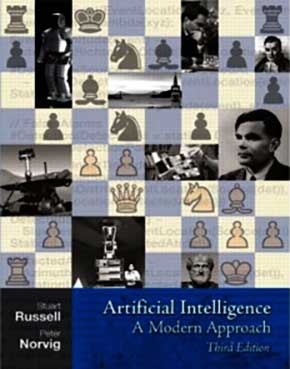
Artificial Intelligence: A Modern Approach, 3e offers the most comprehensive, up-to-date introduction to the theory and practice of artificial intelligence. Number one in its field, this textbook is ideal for one or two-semester, undergraduate or graduate-level courses in Artificial Intelligence.
Dr. Peter Norvig, contributing Artificial Intelligence author and Professor Sebastian Thrun, a Pearson author are offering a free online course at Stanford University on artificial intelligence.
According to an article in The New York Times , the course on artificial intelligence is “one of three being offered experimentally by the Stanford computer science department to extend technology knowledge and skills beyond this elite campus to the entire world.” One of the other two courses, an introduction to database software, is being taught by Pearson author Dr. Jennifer Widom.
Artificial Intelligence: A Modern Approach, 3e is available to purchase as an eText for your Kindle™, NOOK™, and the iPhone®/iPad®
This is one of the best introductory review to Artificial Intelligence on the market. It’s very well written and organized. There are other books that are better for focusing on one particular aspect of AI, but as a general book this is the best I’ve seen. If you are looking for a really good introductory textbook to AI that does not completely dumb things down, buy this book.
Fundamentals of Machine Learning for Predictive Data Analytics
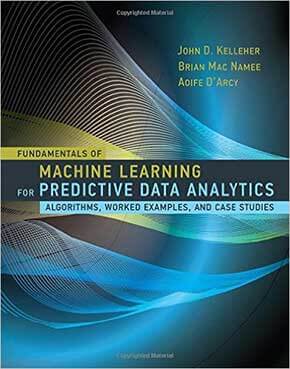
Fundamentals of Machine Learning for Predictive Data Analytics: Algorithms, Worked Examples, and Case Studies (MIT Press)
Machine learning is often used to build predictive models by extracting patterns from large datasets. These models are used in predictive data analytics applications including price prediction, risk assessment, predicting customer behavior, and document classification. This introductory textbook offers a detailed and focused treatment of the most important machine learning approaches used in predictive data analytics, covering both theoretical concepts and practical applications. Technical and mathematical material is augmented with explanatory worked examples, and case studies illustrate the application of these models in the broader business context.
After discussing the trajectory from data to insight to decision, the book describes four approaches to machine learning: information-based learning, similarity-based learning, probability-based learning, and error-based learning.
Each of these approaches is introduced by a nontechnical explanation of the underlying concept, followed by mathematical models and algorithms illustrated by detailed worked examples. Finally, the book considers techniques for evaluating prediction models and offers two case studies that describe specific data analytics projects through each phase of development, from formulating the business problem to implementation of the analytics solution.
The book, informed by the authors’ many years of teaching machine learning, and working on predictive data analytics projects, is suitable for use by undergraduates in computer science, engineering, mathematics, or statistics; by graduate students in disciplines with applications for predictive data analytics; and as a reference for professionals.
Paradigms of ai programming case studies in common lisp
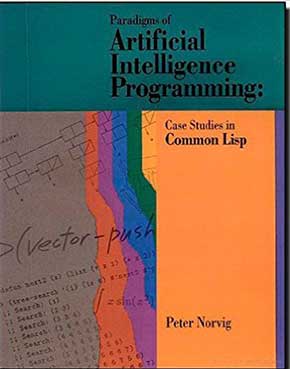
Paradigms of AI Programming is the first text to teach advanced Common Lisp techniques in the context of building major AI systems. By reconstructing authentic, complex AI programs using state-of-the-art Common Lisp, the book teaches students and professionals how to build and debug robust practical programs, while demonstrating superior programming style and important AI concepts. The author strongly emphasizes the practical performance issues involved in writing real working programs of significant size.
Chapters on troubleshooting and efficiency are included, along with a discussion of the fundamentals of object-oriented programming and a description of the main CLOS functions. This volume is an excellent text for a course on AI programming, a useful supplement for general AI courses and an indispensable reference for the professional programmer.
This is an excellent book for both the history of AI and a lot of programs written very well in Common Lisp. Peter Norvig is actually very enthusiastic about AI and programming. From a glimpse of the book, it’ss valuable for learners both of AI and Common Lisp.
So this was out list of best machine learning books, but the list will never stop here there is always new books in the market so if we forget any of them please leave the name of that book in the comment.

Leave a Reply